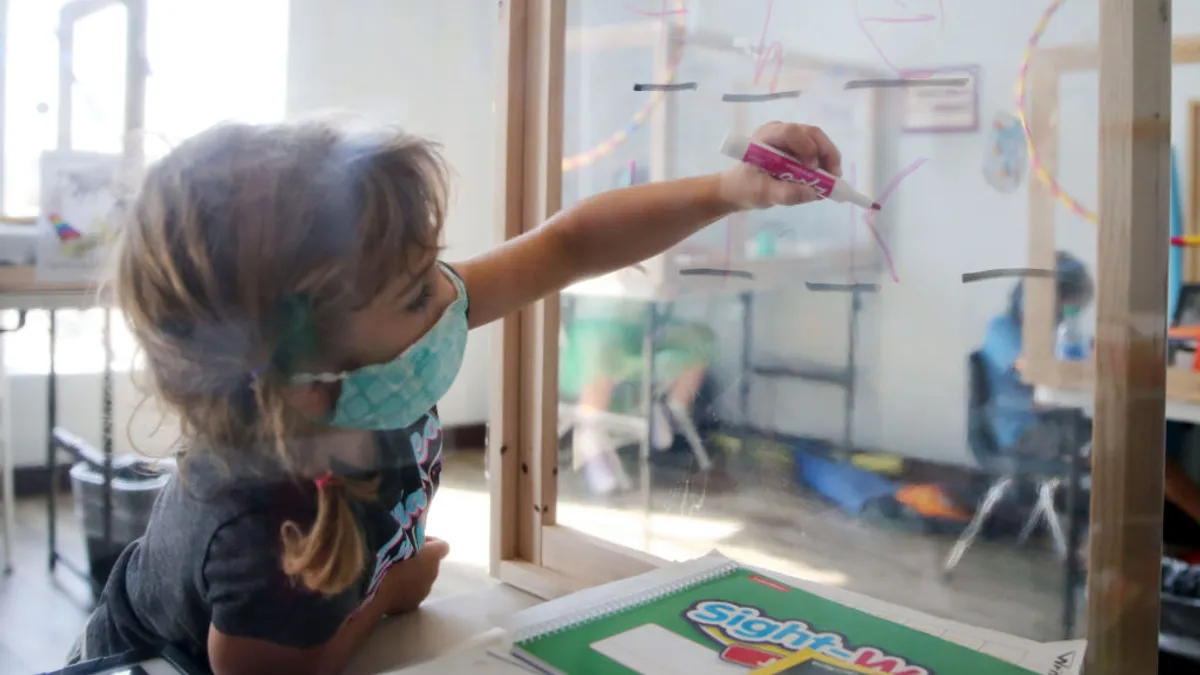In math and reading proficiency as well as participation in state assessments, students at public virtual charter schools lagged behind their peers at traditional public and charter schools during the 2018-19 school year — a year before the pandemic sent most students to online schooling, a Government Accountability Office report found.
To increase the quality of virtual charter schools, the U.S. Department of Education should analyze and address barriers to attendance, GAO recommended. Through improved data quality, the Education Department, along with districts and states, can minimize virtual charter schools' financial and programming risks, the report said.
Enrollment in virtual charter schools has grown faster than at in-person charter and traditional schools, with the pandemic accelerating that growth. That enrollment growth is expected to continue in the short term, with some experts and researchers saying school quality could be improved by holding the schools more accountable for student outcomes.
Elevated risks
The financial and programming risks for virtual charter schools are particularly high when schools contract with for-profit management companies, the 63-page report said. Research from GAO found 41.5% of all virtual charter schools were operated by a for-profit management company in April-August 2021.
The Education Department requires states to report on the profit status of charter schools, but the GAO research found inaccuracies and underreporting of management companies in the data it reviewed.
Several states have investigated virtual charter school management companies for fraud in recent years. An Indiana audit of two virtual charter schools in 2019, for instance, found the schools received more than $68 million in state funds by misrepresenting the number of enrolled and attending students, according to GAO.
The challenges of measuring attendance in virtual charter schools could have financial consequences affecting the amount of certain state and federal funds a school receives. Virtual charter schools had, on average, the lowest per-pupil expenditure at $8,295 in the 2017-18 school year, compared to $10,966 for brick-and-mortar charter schools and $13,846 for traditional schools.
GAO's recommendations
Although charter school oversight is mostly at local and state levels, GAO advised the Education Department to consider the following recommendations based on its research. The department agreed to:
- Examine lower assessment participation rates in virtual charter schools. A lack of systematic information about why virtual schools have low participation rates on federally required state assessments hinders states' ability to hold these schools accountable. The GAO report found that in 2018-19, the average virtual charter school student participation rate on state assessments was 82% for math and 83% for reading. For traditional public school students, participation rates were 98% for both math and reading.
- Ensure that states report comparable attendance information. While the Education Department has resources and a technical assistance center to promote accuracy in attendance calculations and reporting, it has not provided policy documents on tracking attendance in a virtual learning environment aside from guidance related to COVID-19 school closures.
- Help states report accurate information on charter schools' contracts with management organizations. Schools that contract with management organizations may face major programmatic risks if they relinquish too much control over administration of federal grants. A 2016 Education Department audit found charter schools contracting with management organizations may present elevated programmatic risks, as well as a lack of accountability for federal funds and student performance.The risks can increase if a for-profit management company puts too much attention toward profits and not toward federal compliance or student outcomes, the GAO report said.
Enrollment growth
Enrollment in full-time virtual schools increased by about 34,600 students between 2017-18 and 2019-20, with 477 full-time virtual schools schooling 332,379 students in 2019-20, according to a May 2021 report from the National Education Policy Center.
Just four states — California, Ohio, Oklahoma, and Pennsylvania — enrolled over 50% of all virtual charter school students, and just 10 schools enrolled 25% of all virtual charter students, the GAO report said.
"The hallmark of the charter school movement is innovation, which of course cannot come at the cost of student achievement."

Christy Wolfe
Senior vice president for policy, research and planning for the National Alliance for Public Charter Schools
Given the disruption to traditional schools due to COVID-19, virtual charter school enrollment is likely to continue to climb for the next few years before leveling off, according to Lauren Morando Rhim, executive director and co-founder of the Center for Learner Equity, a nonprofit formerly known as the National Center for Special Education in Charter Schools.
The pandemic caused a bump from students whose families otherwise would not have chosen virtual charter schools, she said. Because virtual charter schools were experienced in remote learning, Morando Rhim said, "I think for a lot of parents the calculation was, ‘Well, it's the least bad.’"
Improving quality
With the rise of virtual learning, the Center for Learner Equity released a resource for providing special education services in remote settings. The Educating All Learners Alliance also made resources for virtual learning publicly accessible. The National Alliance for Public Charter Schools has resources on improving the quality of public virtual charter schools as well.
The GAO report found the average math proficiency rate in 2018-19 was 25 percentage points lower (21%) for virtual charter school students compared to traditional public school students (46%). Reading scores also were lower for virtual charter school students than traditional public school students at 41% and 50% respectively.
Christy Wolfe, senior vice president for policy, research and planning for the National Alliance, said the GAO report missed the important context of why families are choosing virtual schools.
"The hallmark of the charter school movement is innovation, which of course cannot come at the cost of student achievement," Wolfe said in an email. "We support the accountability of all public schools including traditional district schools, virtual public schools, brick-and-mortar public charter schools, and virtual public charter schools.”
Morando Rhim anticipates student performance in virtual charter schools will improve as a broader group of students choose the virtual charter schools option, including even those who have thrived in traditional public schools.
While there could be value in Education Department regulations specifically for virtual charter schools, the biggest difference in improving quality could come from state-level action for accountability mechanisms, policy and authorizing structures, Morando Rhim said.
Whether a charter school management company is non- or for-profit doesn't matter as much, she said.
"Philosophically, I have no opposition, but when their performance is terrible, it's a problem," Morando Rhim said. "I do think that states should be regulating it and I think it's a red herring to focus on the profit. I think what they should be focusing on are the outcomes."






















